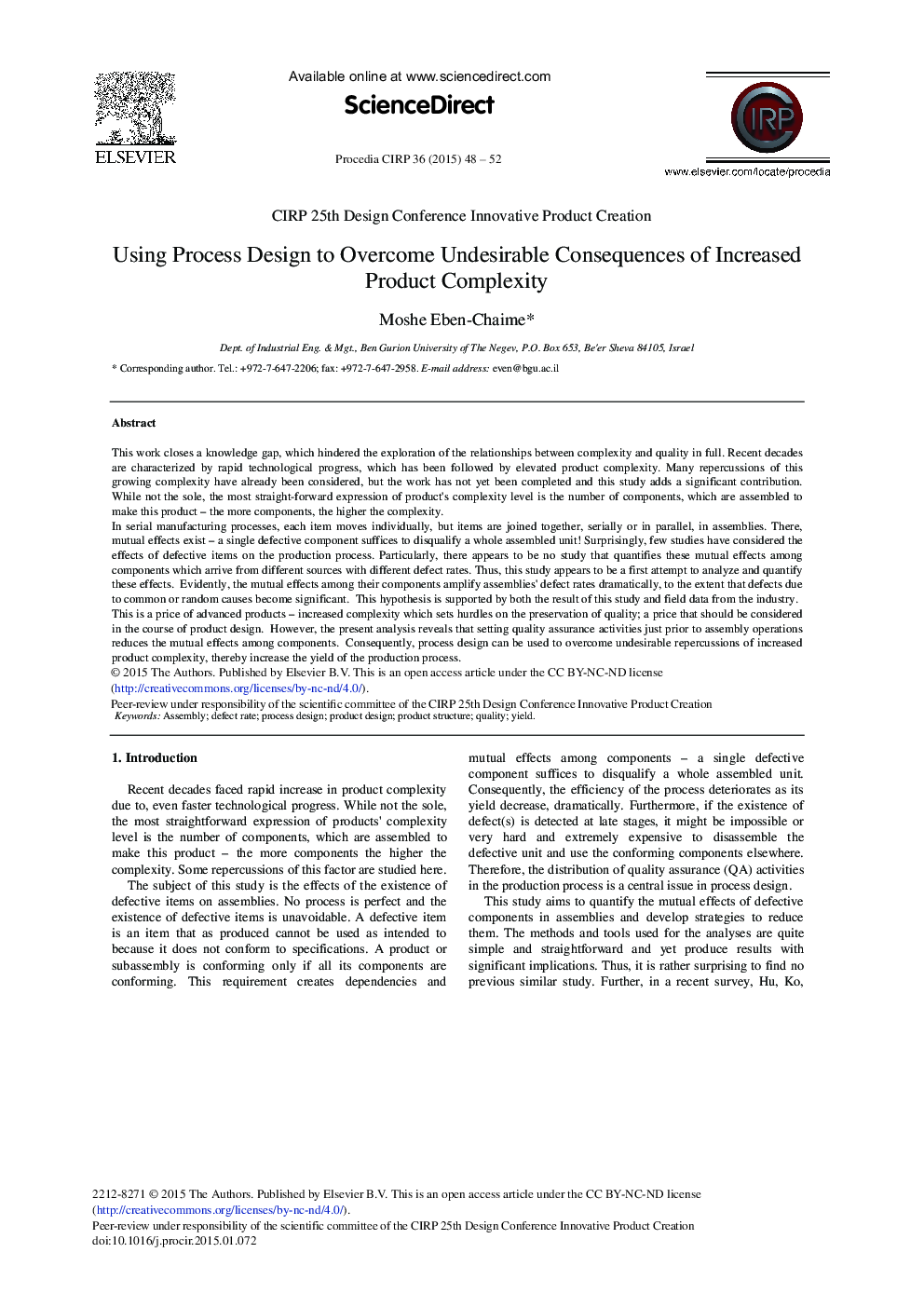| Article ID | Journal | Published Year | Pages | File Type |
|---|---|---|---|---|
| 1699391 | Procedia CIRP | 2015 | 5 Pages |
This work closes a knowledge gap, which hindered the exploration of the relationships between complexity and quality in full. Recent decades are characterized by rapid technological progress, which has been followed by elevated product complexity. Many repercussions of this growing complexity have already been considered, but the work has not yet been completed and this study adds a significant contribution. While not the sole, the most straight-forward expression of product's complexity level is the number of components, which are assembled to make this product – the more components, the higher the complexity. In serial manufacturing processes, each item moves individually, but items are joined together, serially or in parallel, in assemblies. There, mutual effects exist – a single defective component suffices to disqualify a whole assembled unit! Surprisingly, few studies have considered the effects of defective items on the production process. Particularly, there appears to be no study that quantifies these mutual effects among components which arrive from different sources with different defect rates. Thus, this study appears to be a first attempt to analyze and quantify these effects. Evidently, the mutual effects among their components amplify assemblies’ defect rates dramatically, to the extent that defects due to common or random causes become significant. This hypothesis is supported by both the result of this study and field data from the industry.This is a price of advanced products – increased complexity which sets hurdles on the preservation of quality; a price that should be considered in the course of product design. However, the present analysis reveals that setting quality assurance activities just prior to assembly operations reduces the mutual effects among components. Consequently, process design can be used to overcome undesirable repercussions of increased product complexity, thereby increase the yield of the production process.
